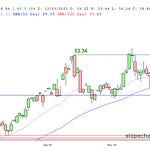-Foreword-
If you have been following my work, you already know I attribute a lot of my learning to Bill Cara and his mentorship. He is relaunching an extensive Weekly report that covers the entirety of the market, and it is over 600 pages long with institutional level insight with a macro lens on the global machine that is the “Market”. He has half a century of market experience! Show me others on Substack that can say the same. Thin list.
When Bill used to publish these weekly reports I initially understood a very small percentage of the report in the mid 2000s. I slowly began to chip away and tried to learn as much as I could week to week, researching the topics I did not understand. I then began to question him and do my own research on why Bill said certain things or why he was focusing on a particular piece of the jigsaw puzzle.
Here is the latest AI generated podcast that summarizes the full report. At over 600 pages this macro view of the global markets is institutional level content.
It is a crime for this level of global insight to be free of charge or ads. Thank you
!600 page pdf available here:
If you want a 5 min overview:
Briefing Doc
Briefing on The Cara Navigator Report (Week Ending October 11, 2025)
Executive Summary
This briefing synthesizes the key findings from the October 11, 2025, issue of The Cara Navigator, a weekly journal of global macro and equity strategy. The central theme of the week was a broad and acute global equity selloff, with metal miners being the sole sector providing refuge for investors. The downturn was precipitated by a confluence of factors, including frothy market conditions and renewed US-China trade tensions highlighted by the threat of significant tariffs.
The critical question facing investors is whether this is a conventional intermediate-term correction (8-12%) or the onset of a major bear market. A clear risk-off sentiment has taken hold, evidenced by a flight to quality into long-duration US Treasuries and a surge in precious metals, with gold surpassing $4,000 per ounce. Conversely, risk assets such as high-yield bonds, cyclical sectors, Chinese technology stocks, and cryptocurrencies faced significant selling pressure.
Quantitatively, the proprietary INSTAT scoring system turned decisively bearish, with 59.2% of instruments tracked registering negative scores. This shift prompted a strategic guidance update to increase cash holdings to 35%. While short-term sentiment, measured by the CNN Fear & Greed Index, has moved to a high level of fear, the report identifies resilient intermediate-term opportunities in specific sectors like utilities and financials, and in international markets such as Vietnam, Japan, and parts of Europe. Central bank policy remains a key driver, with an increasingly dovish Federal Reserve contrasting with divergent policies across other major global economies.
Detailed Analysis of Market Themes
Overarching Market Narrative: A Broad-Based Selloff with Pockets of Refuge
Global equity markets experienced a significant downturn during the week, characterized by a broad selloff that spared few sectors. The report frames the market’s condition with a quote from JP Morgan CEO Jamie Dimon, who acknowledged the possibility of a “severe market event within the next six months to two years” but also noted “lots of merger talk,” signaling continued near-term activity.
The prevailing bearish sentiment is captured through a reference to Barry Manilow’s lyrics, suggesting that bullish arguments are currently exhausted. This view is quantitatively supported by the INSTAT scores, which turned negative for the week.
INSTAT Score Summary: 948 instruments (59.2%) scored negative (bearish), while 654 (40.8%) were positive (bullish). The report concludes, “The Bears are winning 3 to 2.”
The critical uncertainty is the nature of the downturn—whether it will resolve as a standard correction or evolve into a prolonged bear market.
Theme 1: Flight to Quality and Defensive Rotation
A distinct risk-off sentiment drove significant capital flows into safe-haven assets and defensive sectors.
Fixed Income: A flight to quality was evident in the aggressive buying of long-duration US Treasury ETFs. Top performers included the PIMCO 25+ Year Zero Coupon US Treasury ETF (ZROZ.K) and the iShares 20+ Year Treasury Bond ETF (TLT.O). Conversely, high-yield bond ETFs like JNK and HYG were among the worst performers.
Precious Metals: Commodities saw a surge into precious metals, with palladium gaining 13.92% on the week. This safe-haven demand fueled an exceptional rally in gold and silver miners, led by a 37.90% weekly surge in GoldMining Inc (GLDG.K). The iShares Silver Trust (SLV) rose 4.04%.
Sector Rotation: Within the GICS sectors, a clear defensive rotation occurred. The Utilities Select Sector SPDR® Fund (XLU) was a top performer, gaining 1.45%. In stark contrast, cyclical sectors suffered, with Consumer Discretionary (XLY) falling 3.82% and Materials (XLB) dropping 3.34%.
Theme 2: Sector and Regional Divergence
While the overarching trend was negative, performance was highly divergent across regions, sectors, and thematic industries.
US vs. International Markets: All major US indexes declined, with the Russell 2000 small-cap index (US2000) leading the retreat at -3.42%. This stood in sharp contrast to strong weekly gains in Argentina’s .MERV index (+6.64%) and Japan’s .JP225 (+5.07%). The VanEck Vietnam ETF (VNM) surged 8.27%, indicating a significant capital shift to that emerging economy. Asian markets, particularly Hong Kong (HK50, -3.13%) and China, experienced severe downturns.
Technology Bifurcation: The tech sector was characterized by extreme bifurcation. Advanced Micro Devices (AMD.O) surged 30.40% on AI-related enthusiasm. In contrast, Chinese technology stocks sold off sharply, with Alibaba (BABA.K) falling 15.44%.
Natural Resources Contrast: The strength in precious metals miners was countered by heavy selling in the energy sector as oil prices declined. The SPDR® S&P Oil & Gas E&P ETF (XOP) fell 6.93%. Critical minerals also diverged, with vanadium producer Largo Inc. (LGO.O) gaining 23.46% while lithium miners like Piedmont Lithium (PLL.O) plummeted 18.36% on oversupply fears.
Speculative Asset Weakness: Interest-rate-sensitive and speculative assets underperformed dramatically. The iShares US Home Construction ETF (ITB) fell 8.60%, and the cryptocurrency market sold off, with Ethereum (ETH/USD) collapsing by 16.68%.
Theme 3: Geopolitical and Macroeconomic Catalysts
A complex mix of central bank policy, geopolitical tension, and domestic policy issues drove market action.
Central Bank Policy Divergence:
Federal Reserve: Maintained a dovish stance following a 25-basis-point rate cut in September, bringing the target range to 4.75–5.00%. Projections imply two more cuts by year-end.
Bank of England: Held its policy rate at 5.00% but slowed its quantitative tightening (QT) program in a dovish signal.
Bank of Canada: Signaled further rate cuts are likely.
European Central Bank: Held its benchmark rate steady.
US-China Tensions: Geopolitical friction escalated, serving as a critical market catalyst.
TikTok Divestiture: President Trump signed an executive order certifying the Oracle–Silver Lake–Fox Corp consortium agreement, allowing TikTok to continue US operations under majority American and allied ownership.
AI Chip Controls: China’s Cyberspace Administration ordered major Chinese tech firms to suspend purchases of Nvidia’s AI chips, escalating the semiconductor conflict.
US Domestic Issues:
Government Shutdown: The ongoing shutdown has created a “data vacuum” by delaying official economic reports, forcing investors to rely on alternative indicators and increasing uncertainty.
Consumer Sentiment: Sentiment has fallen to multi-year lows, widening the gap between market performance and economic reality on the ground.
Strategic Framework and Outlook
Core Investment Philosophy
The report is anchored in a systematic, valuation-based investment strategy that emphasizes acting as a “business owner, not a stock trader.” The core tenets include:
Contrarian Approach: Buying high-quality companies when the market irrationally sells them off (”buying weakness”) and trimming positions when they become overvalued (”selling strength”).
Value-Driven: Decisions are anchored to a rigorous estimate of a company’s intrinsic worth, or Fair Value (FV), calculated using a Discounted Cash Flow (DCF) model.
Disciplined Watchlist: The strategy focuses on the “Cara 100,” a curated list of high-quality, globally diverse companies that meet stringent selection criteria.
The INSTAT Scoring System
A key tool utilized is the INSTAT Price Performance Scoring Matrix, a proprietary system that quantifies market trends and sentiment. It combines three scores:
IN Score (Long-Term): A value between -50 and +50 representing the underlying trend.
ST Score (Short-Term): A value between -25 and +25 representing cyclic momentum.
AT Score (Algorithmic/Day Trading): A value between -25 and +25 capturing reactions to news and intraday activity.
Forward-Looking Guidance and Recommendations
The report advises a disciplined, data-driven approach, prioritizing selective exposure to sectors with sustained momentum while reducing exposure to laggards. In response to the market weakness, the strategy calls for “selectively rotating a large percentage (approximately 30%) of the portfolio into undervalued stocks.”
Action
Allocation
Rationale
Key Opportunities
Strong Buy
10-15%
Focus on assets with robust technicals (AT/ST/IN >0, INSTAT ≥80).
Fortis Inc (FTS, Canada), Roche Holding (RHHBY.PK, Switzerland)
Buy/Add on Weakness
15-20%
Accumulate high-conviction assets during short-term dips.
Kinross Gold Corp (KGC, Canada), WuXi Biologics (WXXWY.PK, China), Global X MSCI Vietnam ETF (VNAM.K)
Hold/Monitor
35%
Maintain positions with mixed signals but potential for upside.
Deutsche Bank (DB, Germany), UniCredit (UNCRY.PK, Italy), Taiwan Semiconductor (TSM)
Cash
35%
Maintain liquidity to capitalize on opportunities and manage risk.
Important Quotes and Statements
On Market Risk: “The critical question now is whether this downturn will resolve as a conventional intermediate-term correction of 8-12%, or if it marks the beginning of a major bear market.”
On Bearish Sentiment: “We started out with a bang, and at the top of the world. Now the guns are exhausted, and the bullets are blanks. And everything’s blank. Thank you Barry Manilow. He’s got it right for now.”
On Investment Philosophy: “My strategy is fundamentally more about being a business owner, not a stock trader. We all trade prices, but only some of us calculate what we believe a wonderful business... is worth, and then we wait for the market to offer it to us at a bargain price.”
On Risk Management: “When the market gets fearful and sells it off irrationally, we become more aggressive buyers. When the market gets greedy and bids it up beyond its worth, we become sellers.”
On Index Funds: “Why would you buy a bunch of bananas at the supermarket knowing some were rotten? You wouldn’t, right. Then why would you buy an Index Fund knowing some of the stocks are losers?”
On Companies vs. Stocks: “One last thing: a company is not a stock. A stock is just a changing price. We trade prices. We own positions. That’s why I use IN, ST, and AT scores... to track price movements and trends in real-time.”
Study Guide
The Cara Navigator Study Guide
Quiz: Understanding The Navigator
Instructions: Provide short-answer responses (2-3 sentences each) to the following questions based on the provided source material.
Describe the purpose and structure of The Navigator report.
What was the dominant market sentiment for the week ending October 11, 2025, and what was the only sector that provided refuge for investors?
Explain the core components of Bill Cara’s systematic valuation-based portfolio management strategy.
What is the INSTAT scoring system, and what do its three main components (AT, ST, and IN) represent?
Summarize the key geopolitical events involving the US and China’s tech sector, specifically concerning TikTok and AI chips.
According to the source, what is a core function of gold for central banks, and how does it function as a “sanctions shield”?
What is the core principle of Dow Theory regarding the relationship between the DJIA and DJTA, and what must happen to confirm a primary trend?
Describe the “risk-off” sentiment observed in fixed income, currency, and commodity markets during the week, citing specific examples of winning and losing assets.
What major investment trend did the Private Market Monitor identify in Q3 2025, and which company secured a $10 billion mega-round?
Based on “The Navigator’s Roadmap,” what was the recommended portfolio action for Fortis Inc (FTS), and what was the recommended overall cash allocation for the portfolio?
--------------------------------------------------------------------------------
Quiz Answer Key
The Navigator is an approximately 600-page weekly research document designed as an essential guide to global macro and equity strategy. It uses a top-down framework, beginning with market sentiment and macroeconomic forces, before delving into tactical and thematic equity research covering major indices, specific industries, and country-specific insights.
For the week ending October 11, 2025, global equity markets experienced a broad and acute selloff, offering no refuge for investors except for the metal miners. This downturn was accentuated by renewed trade tensions between the US and China, which appeared to have exhausted investor sentiment.
Bill Cara’s strategy is to act as a business owner, not a stock trader, by calculating a company’s intrinsic Fair Value (FV) and waiting for the market to offer it at a bargain. The core components are buying high-quality companies when irrational market fear causes their price to fall significantly below FV and methodically selling when market greed bids the price up significantly above FV.
INSTAT is a proprietary Price Performance Scoring Matrix used to monitor market trends and cycles. Its three components are the AT Score (algorithmic/day trading activity based on intraday data), the ST Score (cyclic momentum for swing traders based on shorter-term data), and the IN Score (long-term trend for investors based on extended market data).
The US–China tech war escalated with President Trump signing an executive order to approve a “qualified divestiture” of TikTok to an American-led consortium. Concurrently, China’s Cyberspace Administration ordered its major tech companies to suspend purchases of Nvidia’s AI chips, challenging a prior US Commerce Department compromise and increasing risks of retaliation.
One of gold’s core functions is to act as a “sanctions shield,” as it is the ultimate non-political asset. This function enables nations like Russia and Iran to bypass dollar-based financial restrictions, thereby mitigating geopolitical risks and preserving national wealth outside the control of other financial systems.
A core principle of Dow Theory is that the indices must confirm each other. To validate a primary trend signal, the Dow Jones Industrial Average (DJIA), representing industrial companies, and the Dow Jones Transportation Average (DJTA), representing the movement of goods, must move in the same direction.
A distinct “risk-off” sentiment was evident, characterized by a flight to quality where investors aggressively bought long-duration US Treasury ETFs like ZROZ.K and TLT.O. Conversely, high-yield bond ETFs such as JNK and HYG were among the worst performers, and precious metals like palladium surged 13.92% on safe-haven demand.
The Private Market Monitor identified AI as the leading sector for capital concentration in Q3 2025, with a focus on scaling infrastructure. The most significant investment was a $10 billion mega-round secured by xAI for expanding its generative AI model development.
The roadmap recommended a “Strong Buy” action for Fortis Inc (FTS), identifying it as a top utilities pick with a robust INSTAT score of +100. The overall strategic guidance suggested maintaining a 35% allocation to cash in the portfolio.
--------------------------------------------------------------------------------
Essay Questions
Instructions: The following questions are designed for longer, essay-style responses. Do not provide answers.
Analyze the concept of “divergence” as presented throughout The Navigator 40. Discuss examples of divergence between different asset classes (e.g., precious metals vs. equities), geographical markets (e.g., US vs. Argentina), and within specific sectors (e.g., thematic ETFs, critical minerals), and explain the potential implications for an investor’s strategy as outlined in the report.
Bill Cara’s investment philosophy emphasizes buying weakness and selling strength based on a company’s intrinsic value versus its market price. Using the market conditions described in the “Market Overview” and “The Navigator’s Roadmap” for the week ending October 11, 2025, explain how this contrarian philosophy would be applied in an environment of broad selloffs and isolated pockets of strength.
Discuss the role of central bank policy and geopolitical risk as primary market catalysts, as detailed in the source. How did the actions and commentary from the Federal Reserve, the Bank of England, and the escalating US-China tech tensions shape the market narrative and investor sentiment during this period?
The source explains that a sharp decline in a country’s Treasury yields is often interpreted as a negative economic indicator. Explain the reasoning behind this interpretation, including the concepts of “flight to safety” and an inverted yield curve. Contrast this with the potential positive aspects of lower borrowing costs as described in the text.
Using the INSTAT scoring system as a framework, describe the overall market sentiment for the week. Synthesize the Mean INSTAT scores from various grouped summaries (e.g., R-6 through R-10, R-35 through R-40) to build a comprehensive picture of which market segments were bullish versus bearish and how this data informed the report’s strategic guidance.
--------------------------------------------------------------------------------
Glossary of Key Terms
Term
Definition
The Navigator
An exhaustive, approximately 600-page weekly research document on global macro and equity strategy, designed with a rigorous top-down framework.
The Navigator Brief
A five-section Executive Summary of the weekly Navigator report, distilling critical trends and actionable recommendations.
INSTAT
A proprietary Price Performance Scoring Matrix applied daily to approximately 1,800 instruments to monitor market trends and cycles. It combines the AT, ST, and IN scores.
AT Score
A component of INSTAT ranging from -25 to +25 that utilizes intraday data to capture the activity of algorithmic and human day trading based on reactions to news, rumors, and FOMO.
ST Score
A component of INSTAT for active (swing) traders, ranging from -25 to +25. It represents cyclic momentum using shorter-term data.
IN Score
A component of INSTAT for long-term investors, ranging from -50 to +50. It represents a trend and is based on extended market data and technical indicators.
Fair Value (FV)
An estimate of a company’s intrinsic worth, calculated by the InvestingPro platform using multiple models, including Discounted Cash Flow (DCF) analysis.
Discounted Cash Flow (DCF) model
A valuation model used to estimate a company’s Fair Value by calculating the value of all its future cash flows in today’s dollars.
Cara Barbell 100
A disciplined methodology and set of criteria for selecting core portfolio holdings. Also referred to as the Navigator 100, it is a curated watchlist of top-tier companies.
Dow Theory
A time-tested market barometer based on the combined analysis of the Dow Jones Industrial, Transportation, and Utility Averages. A core principle is that the Industrials and Transports must move in the same direction to confirm a primary trend.
Risk-On
An environment where investors are optimistic and willing to take on higher risk for greater returns. Assets like growth stocks, industrial commodities, and riskier currencies tend to perform well.
Risk-Off
An environment where investors become cautious or pessimistic, prioritizing capital preservation. Safe-haven assets like government bonds, gold, and currencies like the USD and JPY tend to strengthen.
Flight to Safety
An investor behavior pattern during times of economic uncertainty where capital is moved from riskier assets (like stocks) into safer assets (like government bonds). This increased demand for bonds pushes their prices up and yields down.
Yield Curve Inversion
A market condition where short-term debt yields are higher than long-term yields. It is considered a reliable historical predictor of recessions.
SOFR (Secured Overnight Financing Rate)
A modern interest rate charged by the Fed based on loans to commercial banks backed by US Treasury bonds, which has replaced older benchmark rates.
De minimis threshold
A customs value threshold below which goods can be imported into a country without duties or taxes. A proposed overhaul could cost shipping companies like FedEx and UPS over $1 billion annually.
Point and Figure (P&F) chart
A type of price chart that focuses only on significant price movements, ignoring time and volume, by using columns of X’s (price increases) and O’s (price decreases).
MACD (Moving Average Convergence Divergence)
A trend-following momentum indicator that tracks price trends and reversals by showing the relationship between two moving averages of a security’s price.
RSI (Relative Strength Index)
A momentum indicator that measures the speed and change of price movements to identify overbought (>70) or oversold (<30) conditions.
Pivot Points
Key price levels used by traders to identify potential support and resistance zones, calculated using the previous day’s high, low, and closing prices.
GICS (Global Industry Classification Standard)
A standardized classification system for equities. The report uses it to analyze sector rotations across 11 major sectors like Energy, Materials, and Technology.
Quantitative Tightening (QT)
A contractionary monetary policy tool where a central bank reduces the financial assets it holds on its balance sheet, effectively removing liquidity from the financial system.











